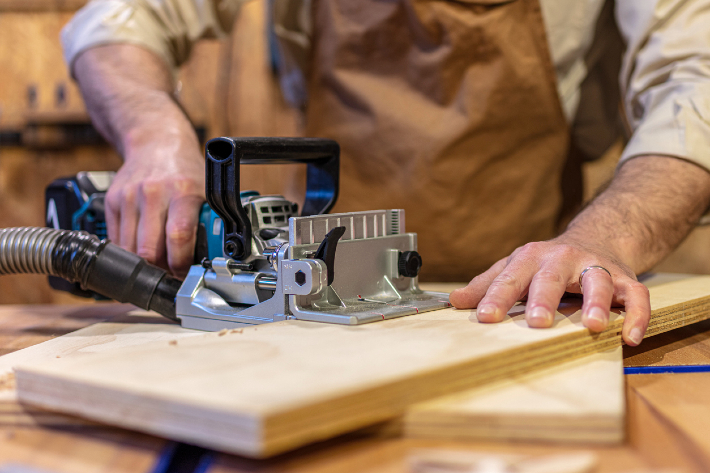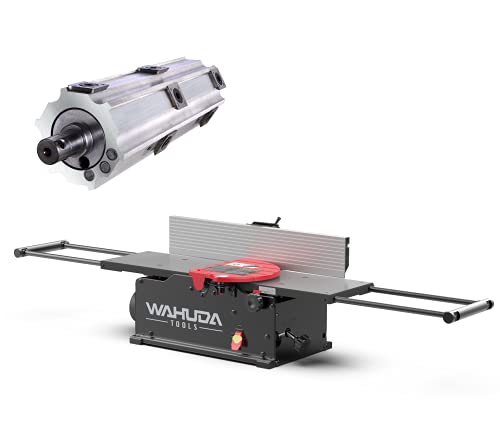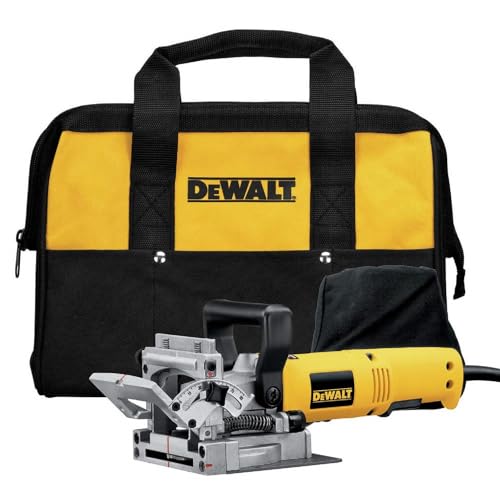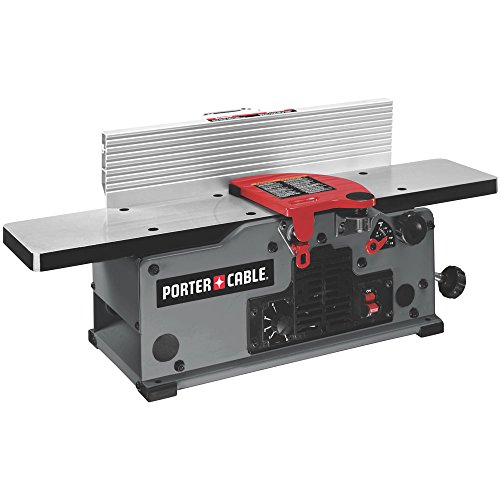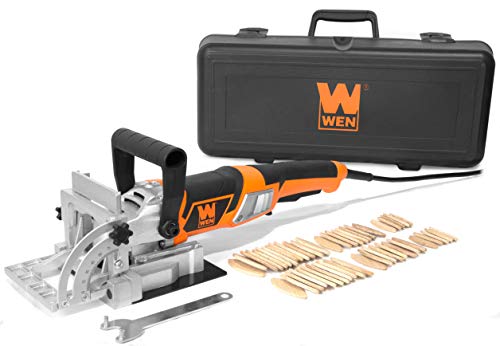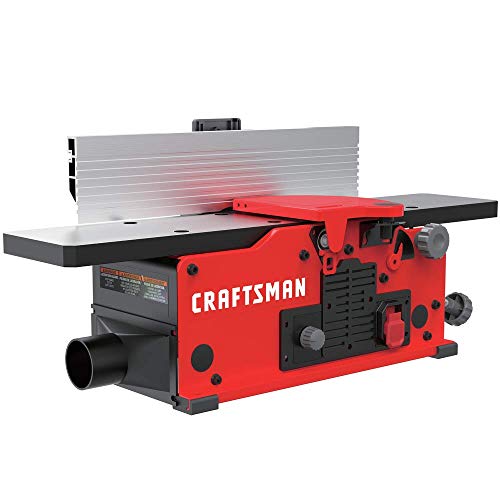- StoreProjects
- Free Plans and Projects
- Furniture Projects
- Jigs And Fixtures Projects
- Shop Projects
- SketchUp Models
- Shop Storage
- Workbenches
- Free Woodworking Downloads From Lee Valley
TechniquesToolsVideos- Premium Streaming Video Site
- Experts Guide to Gluing & Clamping Wood
- Mastering Built-In Furniture
- Simple Live-Edge Slab Table
- CNC – Designed for Woodworkers
- Milling Your Own Lumber
- Advanced Bandsaw Techniques
- I Can Do That! – Simple Woodworking Projects
- Woodwright’s Shop with Roy Underhill
- Tricks of the Trade
BlogOur content is meticulously curated through independent research, testing, reviews, and AI-driven recommendations, all designed to present you with the finest product choices. When you make a purchase through our links, it could result in us earning a commission.The Best Wood Jointers for More Accurate Results
Last updated: 14 Jun 2024
For the modern woodworker, achieving precision and efficiency is paramount, and luckily wood jointers have been designed to meet these exacting standards. Whether you're drawn to the robustness and stability of a benchtop jointer for your workshop or the versatility and maneuverability of a handheld model for on-the-go tasks, both styles are engineered to surpass traditional hand tools. With powerful motors and sharp carbide cutters, these jointers tackle even the toughest woods, smoothing out irregular grains and warped surfaces with ease. So, if you're looking to step up your woodworking game, consider one of the best wood jointers of 2024 to transform rough lumber into masterpieces with unparalleled precision. And if you're looking for our top recommendation, I'd like to shine the spotlight on the Wen Biscuit Wood Jointer, which we've landed on as the best overall option on this list. Now let's get started!
- Best Overall: Wahuda Benchtop Wood Jointer Shop Now ➔
- Great for Beginners: DeWalt Biscuit Wood Jointer Shop Now ➔
- Most Speed Options: Porter-Cable Wood Jointer Shop Now ➔
- Best Value: WEN Biscuit Wood Jointer Shop Now ➔
- Most Heavy-Duty: Craftsman Wood Jointer Shop Now ➔
View all ContentsThe Best Wood Jointers
Best Overall
The Wahuda Benchtop Wood Jointer excels in both precision and versatility. First off, its solid construction with a cast iron table ensures stability for all woodworking tasks. The spiral cutter’s carbide inserts deliver consistently smooth cuts, and the 12,000 rpm blade speed enhances efficiency. Adjustability is a breeze with the fence’s range from 90 to 135 degrees, accommodating various angles and bevels with ease. And for larger projects, the extendable table with its retractable frame offers additional support. Safety is paramount, too, thanks to a lockable power button to prevent unintended starts. If you ask me, this wood jointer is a standout choice for its reliable performance and safety features, making it a top pick for woodworkers.
Pros
- Adjustable fence offers high flexibility
- Extendable workstation for more area
- Reduced footprint helps save
Cons
- The price is a bit high
Great for Beginners
The DeWalt Biscuit Wood Jointer is a standout tool that’s perfect for beginners and seasoned woodworkers alike. Its powerful 6.5-amp motor and swift 10,000 rpm performance ensure precise, clean cuts across various wood types. The tool’s adjustable fence, ranging from 0 to 90 degrees, allows for consistent angle cuts, while the pinion fence and dual rack system maintain the blade and fence alignment for accurate results. Fine-tuning the blade-to-fence distance is straightforward, accommodating different wood thicknesses, and the pre-set depth stops for standard biscuit sizes add to the jointer’s convenience. Overall, this well-constructed jointer requires minimal setup and is designed for ease of use, making it an excellent choice for efficient and precise wood joining tasks.
Pros
- Anti-slip pins stabilize your project
- Works on the hardest woods
- Heavy-duty aluminum clamps secure stationary pieces
Cons
- The handle is located near the motor
Most Speed Options
The Porter-Cable wood jointer is an indispensable tool for woodworkers who face the challenge of working with a variety of wood types. Its powerful motor is not just about raw performance; it’s about the nuanced control it offers, with speed adjustability that ranges from 6,000 to 10,000 rpm. This feature is crucial for craftsmen who demand precision and flexibility, as it allows them to tailor the tool’s performance to the specific needs of each material, whether soft pine or hard maple. The jointer’s adaptability makes it a standout choice for ensuring each cut is executed with meticulous accuracy, which is absolutely essential for high-quality woodworking.
Pros
- 6-inch stock for better woodwork
- Works well with a variety of woods
- Lets you control the motor speed
Cons
- Aluminum fence might wobble
Best Value
The WEN Biscuit Wood Jointer excels in both portability and performance, which makes it ideal for woodworkers who often find themselves on the move. Beyond that, its versatile design ensures the seamless joining of wood panels and precise board alignment. With an adjustable fence angle, it accommodates biscuit slots at various alignments and heights, featuring pre-set stops for sizes #0, #10, and #20. The robust 8.5-amp motor, clocking in at 10,000 rpm, guarantees accuracy in every cut. Offering exceptional value, I can safely say that this model is a top pick for its balance of affordability and high-quality results.
Pros
- Carbide-tipped blade offers excellent performance
- Very portable design
- High-powered motor generates the speed you need
Cons
- Doesn’t feature fine tune knobs
Most Heavy-Duty
The Craftsman Wood Jointer stands out with its variable-speed motor that’s capable of 6,000 to 11,000 rpm, translating to 12,000 to 22,000 precise cuts per minute. This adaptability allows for exceptional accuracy across various materials, ensuring both flatness and straightness in every cut. Further, the jointer’s knife adjustment is simplified with a jackscrew leveling system and a lockable cutter head, providing easy customization for any project. And as the cherry on top, this wood jointer’s centrally mounted fence supports accurate and consistent cuts. For those seeking a durable and precise wood jointing tool, this Craftsman model is an excellent choice.
Pros
- Great for flattening, edging, and joining
- Motor boasts variable speed configuration
- Enough workspace for larger wood pieces
Cons
- Doesn’t feature an extendable workstation rack
Buying Guide: Wood Jointers
Choosing the perfect wood jointer can be a bit like finding a needle in a haystack, but it’s all about knowing what to look for. Size definitely matters here; you’ll want a jointer that can handle the breadth of your projects, so think big for those expansive tabletops and long for the slender chair legs. Power is another key player — a robust motor will keep things running smoothly, no matter the wood’s temperament. And let’s not forget about the cutters; look for ones that promise precision and longevity. Remember, a jointer is an investment in your craft, so take your time, weigh your options, and you’ll be crafting seamless joints in no time.
Main Types of Wood Jointers
Hand-operated wood jointers
Hand-operated wood jointers offer portability and convenience, eliminating the need for a tabletop setup or assembly. Simply plug them into an electrical outlet, adjust the fence to your preferred angle, choose the stop mark, and you’re all set to work on your wood piece. These jointers are designed to create biscuit slots, enabling the joining of two wood panels effortlessly.
Benchtop wood jointers
These tools are designed for flattening, edging, and joining wood pieces of different sizes. Due to their large size and heavy build, they are not portable, yet they provide greater precision and can effortlessly manage larger pieces of wood.
Important Factors to Consider
Motor speed
A wood jointer’s performance is largely determined by its motor speed. Most models offer a fixed speed, such as 6,000 rpm or 10,000 rpm, which varies according to the motor’s power. High-speed jointers are excellent for precise cuts or working with harder woods, whereas low-speed jointers are more appropriate for beginners or general woodworking tasks where extreme precision isn’t necessary. Jointers with fixed speeds present a significant limitation, however, in that they are not versatile for different materials. For those who frequently work with a variety of materials, it is advisable to opt for a jointer with variable speed settings. Typically, these settings range from 6,000 to 11,000 rpm, allowing for smooth cuts on both soft and hardwoods without causing damage to the workpiece.
Cutter material
Jointers excel in delivering precise cuts, flattening, and edging. Opting for a tool with standard cutters might lead to tangled wood fibers or even a snapped blade. It’s wise to select models that come with carbide cutters, as carbide is a robust material capable of withstanding wear and tear. Moreover, carbide blades tend to be sharper, allowing for clean cuts through wood fibers without resulting in rough surfaces.
Workstation
If you choose a benchtop wood jointer, make sure the workstation is large enough to meet your work requirements. Most models have larger and broader worktops where you can fit wood blocks of different sizes. Some jointers also come with an extendable rack on either side, offering a larger workplace and more flexibility to deal with longer pieces. While browsing benchtop jointers, also be sure to look for a cast iron workstation with a steel top since this combination of materials is highly durable and offers optimal stability.
Fence
Both hand and benchtop wood jointers come with an adjustable fence that you can tilt to achieve the desired angle and height for cuts. Usually, you can tilt fences of hand jointers from 0 to 90 degrees, while on benchtops, the tilting angle varies between 90 and 135 degrees.
Cutting depth
Benchtop wood jointers are configured as 6-inch and 8-inch, which determines the cutting depth of the tool. Go for the 6-inch model if you want narrow cuts, while for wider and larger cuts, the 8-inch tool is ideal.
Biscuit slots
Most manual wood jointers come with pre-set stops, allowing you to adjust the knob to change the biscuit slot size. The three most commonly used slot sizes are #0, #10, and #20.
Knife type
Benchtop wood jointers are available with two types of knives: two-blade and spiral. Two-blade knives provide a smooth cut along the edge of the wood but require frequent replacements due to wear and tear. Conversely, spiral cutter jointers offer the advantage of less frequent blade changes. Additionally, they yield smoother and more precise cuts.
Safety Precautions to Follow When Using a Wood Jointer
- Place the cupped wood surface down over a benchtop wood jointer’s workstation.
- Always cut along the grain of the wood piece you are using.
- Lock your benchtop wood jointer’s power button to prevent accidents.
- Slide in a bar and check if the bottom fence rack and the blade are equally spaced or not.
People Also Asked
Can I change the fence height in a wood jointer?
Yes, you can change the fence height in wood jointers using its fine-tuning knobs.
How often do I need to replace wood jointer cutter heads?
If the cutter head on the jointer has dulled or is producing uneven cuts, it should be replaced as soon as possible.
Which type of wood jointer is best for a small workshop?
For a small workshop, go with a hand-operated wood jointer, provided you do not want to flatten or edge the workpiece surface.
What is a wood jointer?
A wood jointer is a tool used for planing that can be either benchtop or stationary. It is comprised of in-feed and out-feed tables, which create the "bed," along with a fence and a cutting head. To use it, you place a piece of wood flat against the in-feed table and firmly against the fence, then push it across the blade to shave off a layer of the wood.
What's the difference between a wood jointer and a planer?
Jointers and planers are both essential for planing, but they have distinct roles. The jointer is all about milling one face of the wood and ensuring one edge is perfectly flat and perpendicular. Meanwhile, the planer takes over to give the whole board a uniform thickness. Together, they're the perfect duo for any woodworking task.
Article Contributors
Read More About Popular Woodworking Reviews Team HereThe Popular Woodworking Review Team’s product reviews and comprehensive guides are here to help you select the best gear and tools to efficiently complete top-quality woodworking projects.
Popular Woodworking is reader-supported: When you buy through links on our site, we may earn an affiliate commission. Artificial Intelligence (large language models) may have been used in the research and creation of the content.
Questions about product testing or a specific articles should be sent to aimperiapt@gmail.com

